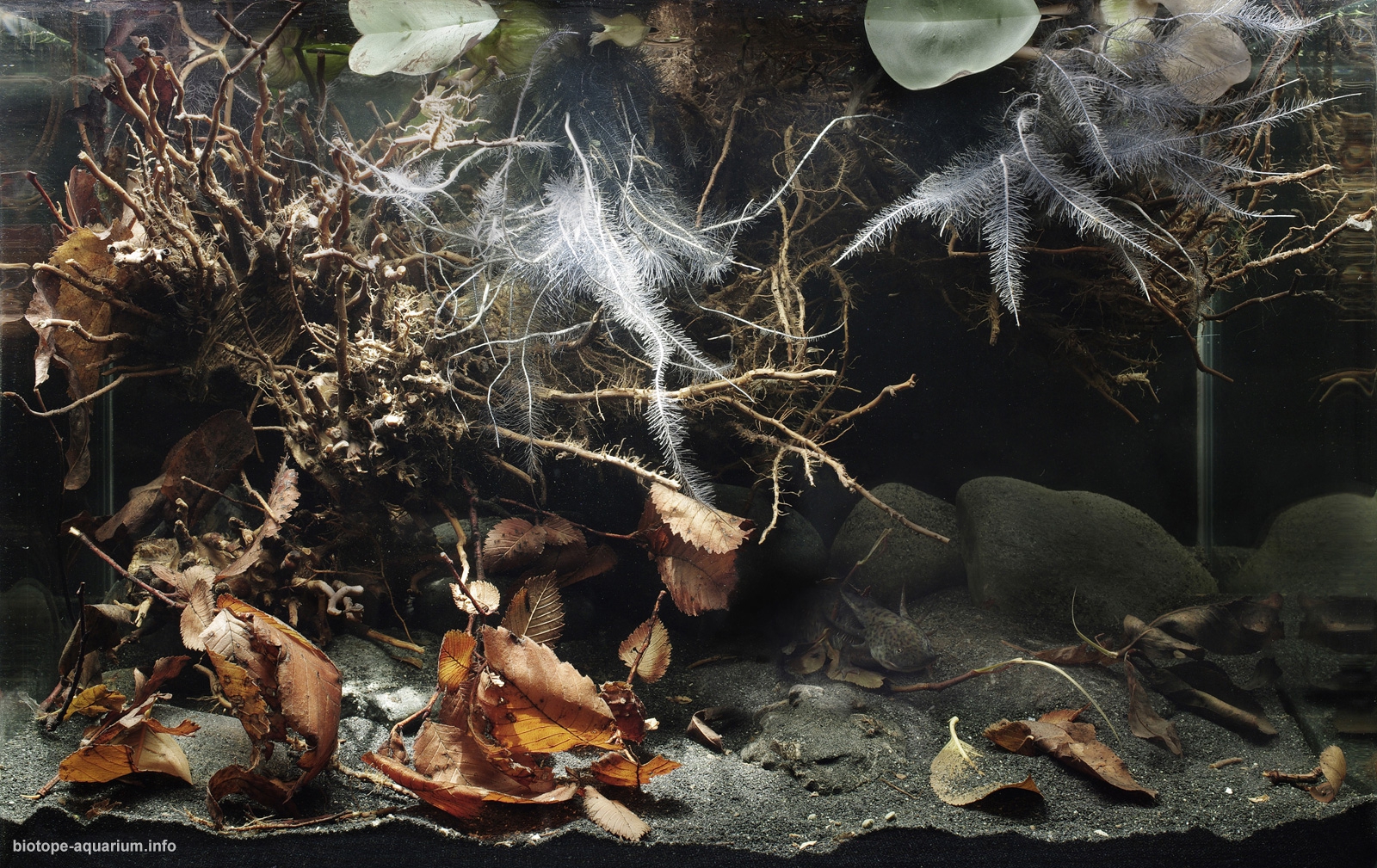Lake Xochimilco in Mexico City
The 33rd place in the qualifying stage of the Biotope Aquarium Design Contest 2014
![]() Russia. Svetlana Kirillova
Russia. Svetlana Kirillova

Volume: 40 L
List of fishes: Ambystoma mexicanum
List of plants: Eichhornia crassipes
Biotope description: Lake Xochimilco in Mexico City is located in the south of the city and, in fact, is now a system of channels with a total length of about 170 km, which is a UNESCO World Heritage Site. These channels were formed as a result of the creation of numerous man-made islands – chinampas, where 1000 years ago local people cultivated flowers and made gardens. Mexico City is located at an altitude of over 2,200 meters above sea level and the water in the canals is cold enough (20 degrees Celsius in the summer, 12 in the winter), and the channel walls often consist of roots. Aquatic plants are mainly floating, bottom of the channels is covered with a thick layer of silt. The traditional system of gardening involves the use of water, sludge and algae from the lake for irrigation and fertilizing plants. Now because of the use of chemical fertilizers and the existence of a metropolis the lake’s ecosystem is seriously damaged, and this especially reflected in the number of amazing endemic amphibian, the axolotl. Axolotl is a larval form of Mexican salamander, known for its ability to neoteny. In Aztec times axolotl was an important part of their diet, but now in the wild they are about to extinct, as in the lake African tilapia and Asian carp were introduced as fish culture. Along with pollution of the environment it caused significant damage to native fauna. So, in 2004, according to estimates of local biologists the population of axolotl was 1000 per 1 sq km, in 2008 it was already 100, and in 2009 Nick Baker within a few days found only one axolotl. We can only be glad that these amphibians breed well in captivity, and they do not seem threatened by the danger like dodo and the Steller’s sea cow.

The Xochimilco was my 5th place, because it should have also some fishes (e.g. Poecilia spp. live with it).

It is a very nice entry. Firstly, it is original in that the author used not fish and not even crustaceans, but amphibians. Secondly, I have nothing against the decor. And thirdly, most importantly, the description of the biotope corresponds to what is shown in the photos.

An interesting biotope seeking the preservation of an endangered endemic species. Congratulations!

This is a portrait of a degraded habitat with invasive and endemic species represented. The feathery roots of the Pistia plants, ragged-edged fallen leaves, and bushy branches of the wood mirror the structures of the fluffy external gills of the Axolotl. The stark tones of black, brown, and white lend the whole thing an air of shadowy mystery. It is not exactly pretty, but it has a chaotic beauty in its strangeness. One can easily imagine such a scene below the surface of the canal, along the banks. I was also impressed by the amount of background research in the description.
